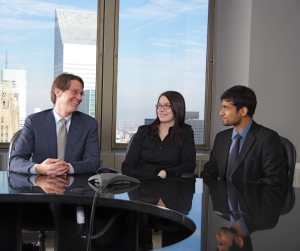
“Live or die, but don’t poison everything.” —Anne Sexton
By Elizabeth Stincelli, DM
Leadership Behaviors
What you, as a leader, do everyday has a ripple effect throughout your organization. This ripple impacts the culture of the organization and determines how things are done and the level of performance you get from your employees. Are you, as a leader, nurturing or poisoning your culture? Do your behaviors give the impression that you are micromanaging everything? Are you communicating effectively? Are you so focused on what needs to be done that you forget why you are even doing it? Have you developed relationships built on mutual trust or are you fostering distrust? Are you tearing down silos in your organization or are you reinforcing them? Learn to recognize and avoid these five toxic leadership behaviors that poison culture.
Micromanagement
Kris Carr tells us, “Sometimes our need to control and micromanage everything erodes our confidence in ourselves and others. The truth: people are much more capable than we think.” Micromanagement is the result of a lack of trust and a need to feel in control. When you micromanage, you undermine you employees’ confidence in their own abilities and stifle any growth or progress they have the potential to make. Employees who are being micromanaged become frustrated and begin wasting time and resources rather than delivering exceptional performance. This type of work environment destroys morale and engagement and poisons culture. Help your employees develop their skills and gain the experience necessary to become the best they can be. Learn to trust their abilities and allow them to do their jobs. When employees feel respected and appreciated they will become more productive, more loyal, and more engaged.
Poor communication
Yehuda Berg said, “Words are singularly the most powerful force available to humanity. We can choose to use this force constructively with words of encouragement, or destructively using words of despair.” Communication is at the heart of how you, as a leader, achieve your goals. The way you communicate can create strong connections and inspire trust or it can destroy trust, morale, and engagement. Are you using your communication to build others up or to tear them down? Be transparent in your communication. You can’t know everything; ask questions, get clarification, and listen openly to the answers and suggestion your employees have to offer. Be collaborative, consider the perspective of others, and frame your communication to fit your audience. When your employees know there is open, two-way communication throughout the organization, they will be better informed and more inclined to share their knowledge and ideas.
Focusing on what instead of why
John F. Kennedy believed, “Efforts and courage are not enough without purpose and direction.” Are you focusing so much on what you do that you have forgotten why you are doing it? You can have a vision of the future that tells you where you are going but you and your employees need a purpose that tells you why you are going there. There is more to your purpose than the bottom line; it’s not just about money, it has to be about making a difference. As a leader, you must make your purpose come alive for those who follow you; focus on the impact you want to have on the world. Your employees want to know that their work has meaning, that they are part of something bigger than themselves, something that matters. If you want a resilient organization that can stand the test of time you need a strong culture; this culture must be based on why, not what. Does everyone know why the organization exists? Where it is going? How it is going to get there? What role they play? Focus your energy on the why and allow your employees to help you figure out and implement the what that will get you there.
Lack of trust
Eric Hoffer explained, “Someone who thinks the world is always cheating him is right. He is missing that wonderful feeling of trust in someone or something.” The most important attribute you can develop as a leader is the ability to inspire trust. Without developing mutual trust you cannot lead effectively; your culture will suffer and your employees will never reach their full potential. You must create a safe space for discussion, debate, and collaborative problem-solving. Learn to welcome the challenges, criticism, and conflicting opinions that employees have to offer. Let them know that you always have their back. Show that you are authentic in all your dealings. The level of trust you develop in your organization will either add to your ability to influence others of subtract from your authority and poison your culture.
Us vs. them mentality
Sharon Salzberg said, “We can learn the art of fierce compassion – redefining strength, deconstructing isolation and renewing a sense of community, practicing letting go of rigid us-vs.-them thinking.” An us vs. them mentality divides your team, undermines your strength, and destroys your culture. You are a team; don’t let your position of authority lead you to believe you are better than anyone else. This mentality builds the silos that lead to ineffective collaboration, distrust, and a breakdown in communication. Be humble and recognize that none of you could do it on your own. Get rid of the us vs. them mentality and build trusting relationships and a sense of community throughout your organization.
Nurture Culture
What type of culture is your behavior as a leader developing? Have you developed your employees enough that you trust them to do their jobs without being micromanaged? Are your employees comfortable and even encouraged to challenge or question you? Does everyone in your organization know why they are doing what they do? Have you developed mutual trust throughout your organization? Do your employees work and collaborate as a cohesive team or have you allowed silos to be built? Pay attention to your behavior on a daily basis, I can guarantee that your employees are watching. Make sure you leadership behaviors are nurturing rather than poisoning your culture.
© 2015 Elizabeth Stincelli
Elizabeth Stincelli is passionate about recognizing and inspiring the leader in each of us. She is the CEO of Stincelli Advisors where she focuses on helping organizations engage employees and improve organizational culture. Elizabeth holds a Doctor of Management degree with an emphasis on organizational leadership.
Learn more about Elizabeth by visiting her website, stincelliadvisors.com and connect with her on Twitter @infinitestin, Google+, and LinkedIn. You can contact her by email at stincelliadvisors@gmail.com.
 “That’s the thing: You don’t understand burnout unless you’ve been burned out. And it’s something you can’t even explain. It’s just doing something you have absolutely no passion for.” —Elena Delle Donne
“That’s the thing: You don’t understand burnout unless you’ve been burned out. And it’s something you can’t even explain. It’s just doing something you have absolutely no passion for.” —Elena Delle Donne


